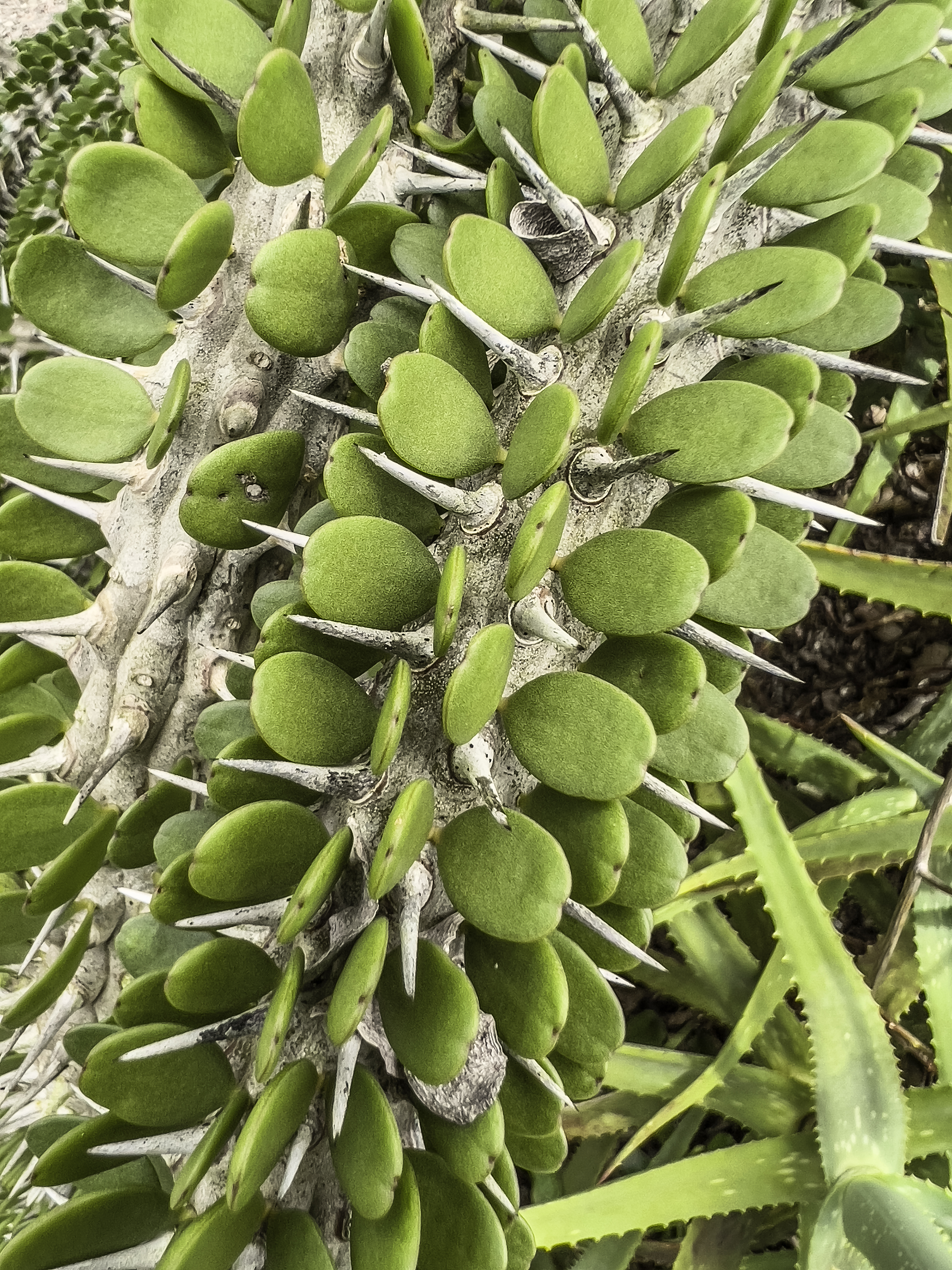Alluaudia comosa
(Alluaudia comosa)

Description
Alluaudia comosa is a rare species of flowering plant. It belongs to the family Didiereaceae, subfamily Didiereoideae, which is found only in the coastal area of SW Madagascar. Didierea comosa Drake is a synonym. It is listed as "vulnerable" on the IUCN Red List of Threatened Species. Alluaudia comosa has a distinctive, easily recognized silhouette with a short trunk and dense branches that stop in a flat crown. This is a deciduous shrub to small tree 2-6 (-10) metres tall that is woody, semi-succulent and spiny, with spines set singly. Spines are grey and 1.5-3.5 cm long. Leaves are developed mostly in pairs, set on a short stalk (petiole), dying off at the beginning of the dry season.They are rounded (10–22 mm X 10 mm) and fleshy. Flowers are produced on a reduced inflorescence in Alluaudia comosa; only the end flower develops, and is set on a very short axis. Flowers are dioecious (male and female flowers on separate plants). This species grows on limestone in dry forests or coastal shrubland. Alluaudia is a genus of flowering plants in the family Didiereaceae. There are six species, all endemic to Madagascar. Most occur in the southwestern subarid forest-thicket vegetation of the island. Species of Alluaudia are dioecious, with male and female flowers on separate plants.Spines are arranged around the leaves as a defense against herbivores. The spines are several meters above the ground, and probably evolved in response to herbivory by now-extinct lemurs, such as Hadropithecus. Several lemur species living today feed heavily on Alluaudia, such as the ring-tailed lemur (Lemur catta) and the white-footed sportive lemur (Lepilemur leucopus). Alluaudia is a genus of flowering plants in the family Didiereaceae. There are six species, all endemic to Madagascar. Most occur in the southwestern subarid forest-thicket vegetation of the island. Species of Alluaudia are dioecious, with male and female flowers on separate plants. Spines are arranged around the leaves as a defense against herbivores. The spines are several meters above the ground, and probably evolved in response to herbivory by now-extinct lemurs, such as Hadropithecus. Several lemur species living today feed heavily on Alluaudia, such as the ring-tailed lemur (Lemur catta) and the white-footed sportive lemur (Lepilemur leucopus).
Taxonomic tree:







